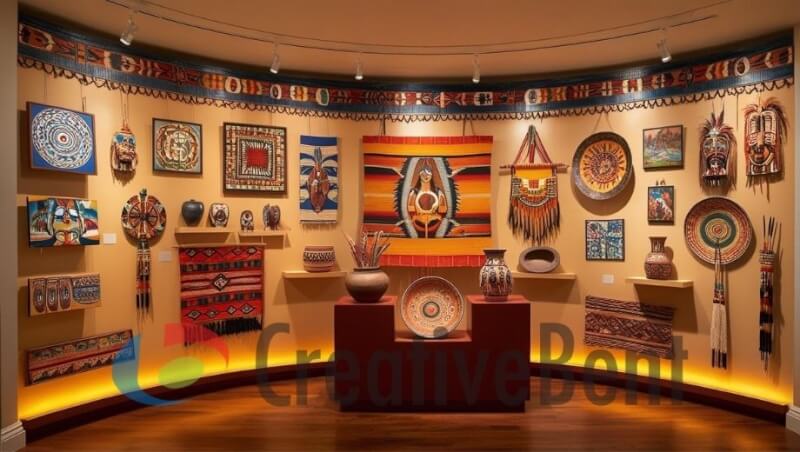
Indigenous art, representing millennia of customs, narratives, and spiritual ties to the land, is an important part of the global cultural legacy. Indigenous art demonstrates the resilience and diversity of Indigenous peoples worldwide, ranging from vivid beadwork by Native American tribes to elegant patterns by Pacific Northwest Coast tribes. In this one-of-a-kind sculpture, we embark on an exploration journey, celebrating historical rituals and present manifestations of Indigenous art.
Historical Customs
Native American art is strongly rooted in long-standing traditions that have been passed down through the generations, some dating back thousands of years. Indigenous artists have long used their artistic ability to transmit cultural identity, spiritual beliefs, and connections to nature through a variety of mediums, including rock art, petroglyphs, totem poles, and ceremonial masks. Indigenous artists today draw inspiration and knowledge from these ancient traditions, which preserve their cultural pride and persistence.
Variations in Culture
Indigenous artists’ work reflects the tremendous range of Indigenous cultures, languages, and practices present worldwide. Because of their diverse histories, situations, and worldviews, each Indigenous culture has created unique artistic practices, techniques, and symbols. The elaborate beadwork of the Maasai people in Africa, as well as the magnificent weaving of the Navajo people in North America, demonstrate how indigenous art is as unique as the nations from which it derives.
Spiritual Importance
Many Indigenous peoples associate art with their spirituality and ceremonial traditions. Spiritual symbolism and meaning are embedded in artistic traditions, which are often passed down through families or clans. Symbols are used to tell stories, commemorate ancestors, and convey information. These symbols include geometric designs, animals, and vegetation. Indigenous peoples use art to maintain spiritual connections to the land, their communities, and their ancestors.
Modern Expressions
Indigenous art has its roots in ancient rituals, but it is also evolving and adapting to the modern surroundings. Today’s indigenous artists draw on old motifs and techniques while also using modern materials, technologies, and themes. Indigenous artists are exploring a variety of techniques and styles for communicating their identities, experiences, and perspectives in the twenty-first century. These include paintings, sculptures, photographs, and multimedia works.
Revitalization of culture
Recently, there has been a surge in efforts to preserve and revive Indigenous art and culture. In addition to debunking myths and misconceptions about Indigenous peoples, Indigenous artists and communities are reclaiming their creative heritage. They are also reviving old practices. Indigenous artists inspire awareness, appreciation, and respect for Indigenous art and culture by sharing their stories and perspectives with the world via art exhibitions, festivals, and cultural events.
Learning about Indigenous art is a journey through the vast tapestry of Indigenous cultures, histories, and worldviews, rather than just an examination of artistic approaches and aesthetics. Indigenous art demonstrates the originality, perseverance, and diversity of Indigenous peoples worldwide, relying on both traditional and modern forms. The immense impact that Indigenous artists have had, and continue to have, on the realms of art and culture becomes more obvious as we research and admire Indigenous artwork.




